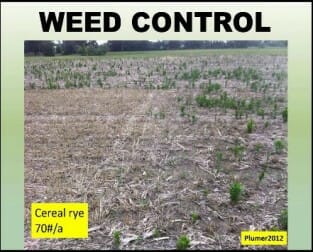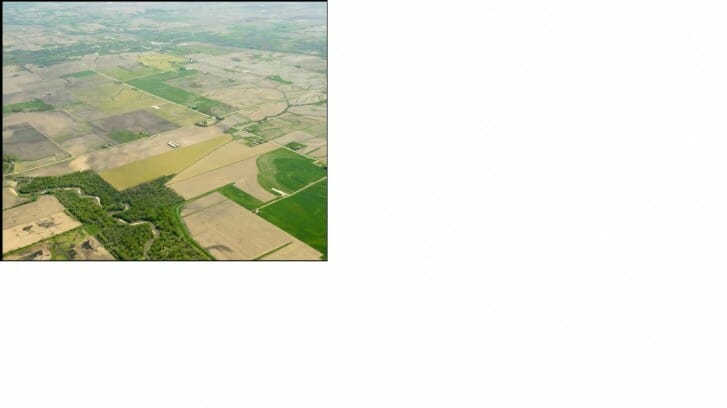Cover Crops Management and Termination
Are you killing cover crops for the first time this spring?  Knowing the best management practices for a successful termination depends on what type of cover crop seed you planted last fall. Hear from Mike Plumer a consultant from central Illinois explain what recommendations for individual cover crops and mixes of cover crop plants what types of herbicides or crimping methods can provide good control. Especially important is knowing if the cover crop is growing and at what plant size the cover crop is most easily terminated. Don’t forget about the winter-kill cover crop species. Although oats can be tricky to get established in the fall in Iowa, towards the east or if the late summer conditions are wet then a winter-kill cover crop like oats can provide great coverage and winter kill for easier spring management. Nervous about killing annual ryegrass? Listen to Mike recommendations for increased success.
Knowing the best management practices for a successful termination depends on what type of cover crop seed you planted last fall. Hear from Mike Plumer a consultant from central Illinois explain what recommendations for individual cover crops and mixes of cover crop plants what types of herbicides or crimping methods can provide good control. Especially important is knowing if the cover crop is growing and at what plant size the cover crop is most easily terminated. Don’t forget about the winter-kill cover crop species. Although oats can be tricky to get established in the fall in Iowa, towards the east or if the late summer conditions are wet then a winter-kill cover crop like oats can provide great coverage and winter kill for easier spring management. Nervous about killing annual ryegrass? Listen to Mike recommendations for increased success.
Do you have a field with weed management issues? Mike also shared a great picture of how after a cereal rye cover crop is terminated the amount of weed control, especially for glyphosate resistant marestail the cereal rye provided.  30 days after this picture was taken some marestail did begin to germinate in the cereal rye area. The allelopathic chemicals had held back the marestail for about 30 days. That extended window can really improve control of this weed.
30 days after this picture was taken some marestail did begin to germinate in the cereal rye area. The allelopathic chemicals had held back the marestail for about 30 days. That extended window can really improve control of this weed.
Then hear from Steve Berger from Wellman, IA share how his farm has improved from the addition of cover crops to his no-till corn, soybean and hog farm. The bright green in the bottom right hand corner of this aerial picture are Steve’s cover crops greening up.  In addition to adding manure to his farm cover crops have really propelled his soil organic matter levels up 1% in the time he’s been doing cover crops on some of his fields.
In addition to adding manure to his farm cover crops have really propelled his soil organic matter levels up 1% in the time he’s been doing cover crops on some of his fields.  As Steve and his dad get used to killing cereal rye ahead of corn they have decreased the number of days prior to corn planting they will kill the cover crop. Steve shared many pictures of dying cover crops from various herbicides and then planting corn or soybeans following termination. See the difference between planter settings. These settings can make or break good yields. Check out the webinar here: https://www.certifiedcropadviser.org/videos/play/certified/education/cover-crops-management-and-termination.flv
As Steve and his dad get used to killing cereal rye ahead of corn they have decreased the number of days prior to corn planting they will kill the cover crop. Steve shared many pictures of dying cover crops from various herbicides and then planting corn or soybeans following termination. See the difference between planter settings. These settings can make or break good yields. Check out the webinar here: https://www.certifiedcropadviser.org/videos/play/certified/education/cover-crops-management-and-termination.flv
Have a follow-up question for Steve Berger or Mike Plumer? Contact Sarah Carlson at sarah@practicalfarmers.org to learn more.
